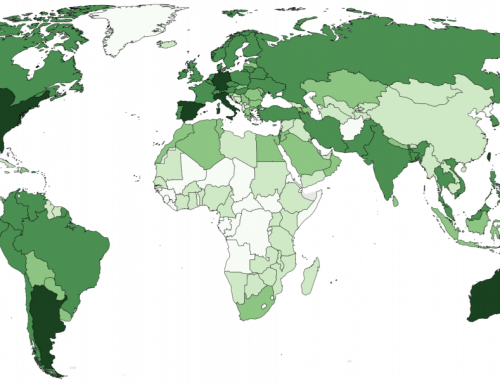(Click to see full image)
This series of graphics depicts the control of academic journals in the Web of Knowledge index by publishers. Mapping academic publishers allows us to understand the geography of who controls the printing and dissemination of academic knowledge.
Data
This visualisation uses data from the Web of Knowledge Journal Citation Reports (JCR) from 2009. Two types of visualisations are paired together on this graphic. The choropleth maps illustrate the number of publishers in each country with darker colours indicating more publishers. The treemaps indicate the number of journals published by each publisher. This graphic is segmented into three categories: publishers of science journals, publishers of social science journals and publishers of both.
Findings
Despite the absence of linguistic and geographic diversity in academic publishing, there remains a surprising lack of concentration amongst journal publishers. Within the groups of publishers that focus only on journals in the sciences or social sciences, the publication of journals is distributed through many organisations and companies. The larger group of publishers that control both science and social science journals, on the other hand, are characterized by a greater degree of clustering (i.e. fewer organizations controlling relatively large numbers of journals). Springer, Wiley-Blackwell, Elsevier and Taylor & Francis control a large amount of the academic publishing market and all have relatively high average citation scores.




